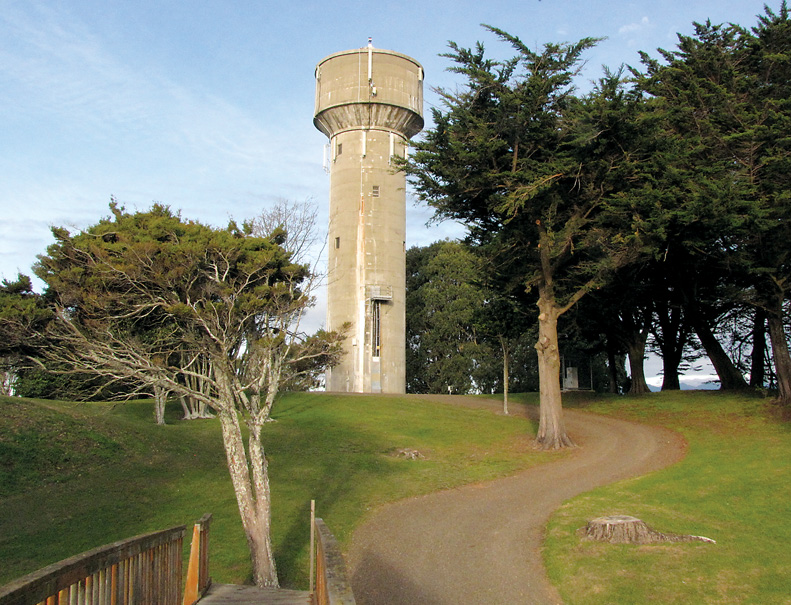
Wednesday Trampers go to the Seaside
Words by Ian Brookes, Photos by William
In November, 18 intrepid Wednesday trampers and a small dog left Memorial Park at 7.30am for their annual trip to the beach at Pukerua Bay north of Wellington.
On our way south, the weather looked rather threatening, with low cloud over the Tararua Ranges (using the terminology recommended in Backcountry), but clearer out to sea. We assembled at the end of the Pukerua Bay Beach Road to walk round the Wairaka Headland to Plimmerton and return via the inland route.
There was a chilly breeze from the West as we set off, but this dropped once we rounded Wairaka Head and the weather from thereon was fine and sunny.
The path is flanked by steep grassy slopes on which a number of feral goats were seen grazing. We soon reached a strategically placed wooden gate leaning against the rocks which is easily climbed and then after a scramble round the headland made it on to a long sweep of beach. This consists of large pebbles and small boulders, which need care in negotiating.
On the way, we encountered a small dead blue penguin washed up on the beach. There is plenty of driftwood at the high tide mark, and after an hour’s walking we chose to sit on some largish logs for morning tea.
The beach eventually leads to a further half hour’s walking on a gravel track heading towards Plimmerton. While on the track, we encountered a walker with two large dogs. An attempt to get them onto leads was only partially successful and one of them charged towards one of our trampers, but no damage was done.
Having passed through the Hongoeka Marae Village, we reached the boating club, where four of our number decided to head into Plimmerton and take the train back to Pukerua Bay.
The rest of us continued into the Karehana Bay Scenic Reserve, where we had lunch at the bottom of a long and steep flight of steps. These provided a challenge immediately after lunch, but the party all reached the top, albeit somewhat puffed.
We then headed up the Taua Tapu Track passing alpacas and donkeys on lifestyle blocks. The track reaches a trig at 114 metres and then descends to Airlie Road. We followed this past the Whenua Tapu Crematorium until we reached the Ara Harakeke walkway which runs parallel to SH1. This winds uphill for about two kilometres to the Pukerua Bay shops. Walking on the asphalt left some trampers in need of refreshment and it was disappointing to find the dairy’s ice cream chiller had lost power.
Another 20 minutes along Rawhiti Road led to the Goat Track, which descends by a number of steep steps down to the beach. Everyone was back to the vehicles by 2.15pm to find the train travellers had arrived safely before us. We then reconvened for coffee and ice creams in Paekakariki.
It was generally agreed that this was the preferred route, rather than that in previous years, when we went inland first. Doing it this way meant the rocky beach was tackled at the start of the day, even though the finish involved the rather tedious walk up the shared cycle path. The statistics collected at the end of the day showed we had walked a distance of almost 17 kilometers.



































